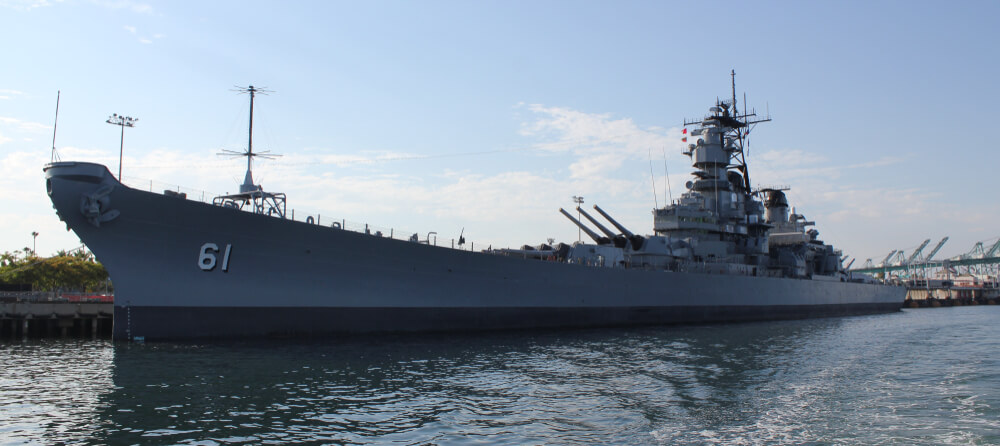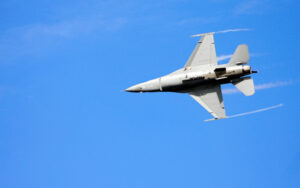What’s old is new again. The possibility of resurrecting battleships as a potent symbol of naval power is back as a popular topic of discussion in the nation’s capital.
Now decommissioned for over 33 years, the four Iowa-class battleships are for many a powerful, cultural symbol of American power. American naval hero John Paul Jones once said, “Men mean more than guns in the rating of a warship,” but there is also a great love for the big guns of the most powerful battleships commissioned for the U.S. Navy.
Winston Churchill called battleships “Castles of Steel,” and despite advances in naval warfare the great, grey ships invoke for many a mythical quality, like King Arthur’s sword Excalibur, a potent weapon sleeping in wait for a warlord worthy to wield their naval power at sea.
National symbolism aside, what are the real possibilities of restoring the last of the dreadnoughts to active service, and what missions might they fulfill for a 21st century U.S. Navy?
The downside
James Holmes, a Naval War College professor and former battleship sailor, outlined a number of obstacles in recommissioning the quartet of armored warships into U.S. service. These include the large crew of the battleships to start, approaching 1,600 officers and sailors for each ship. Each gun turret required a crew of 77 alone to operate.
Some automation might be achieved, but the battleship’s 1930’s-era steam propulsion plant remains manpower intensive, as are its primary 16-inch, 50-caliber and secondary five-inch, 38-caliber guns.
The Navy does not have a ready cohort of trained sailors to operate any of this arguable antique equipment. The electronic and computer equipment date to the early 1990’s as well and would require substantial upgrades. Recent costly attempts to overhaul and upgrade the younger, although arguably more worn Ticonderoga-class cruisers suggest the Navy might struggle to accomplish these upgrades in a timely manner.
Shells for the main armament of the battleships may also be in short supply. A 2016 report suggested the U.S. Army (the custodian of U.S. ammunition) was seeking to recycle the 15,000+ remaining battleship shells in its possession housed at the Crane, Indiana Army Ammunition Activity.
Battleship gun barrels have a lifespan as well and need regular replacement, but the Navy scrapped most of those as well. The combination of aged equipment whose manufacture long ago ceased, lack of trained sailors to crew the ships, and lack of shells and replacement barrels for the iconic main gun battery could easily deter any return of the battleships to the U.S. Navy inventory.
Missions for the battleships
The return of the battleships in the 1980’s was in response to both a need for naval surface fire support weight for Marine Corps operations and a need for naval battlegroups to operate in areas with low air threats.
Battleships could conduct their traditional gunfire support missions for operations ashore and serve as the centerpiece of battleship surface action groups that would free aircraft carriers for other missions where the air threat was more significant.
Missions for battleships in the present are less clear. Shore bombardment remains a key battleship mission, but air and missile threats to warships, such as the Houthi rebel’s missile capability in Yemen, are much more widespread and dangerous than in the 1980’s.
Missiles, however, are depleted even faster in combat then previously thought, as has been the case in the battles against the Houthis in the Red Sea, and in the Russo-Ukraine war. Several hundred battleship shells, especially a proposed 11-inch variant with longer range, might be especially useful in engaging enemy surface targets.
Other firepower options
The Navy has other options for adding more firepower at sea rather than returning the battleships for yet another period of active duty. The previous attempt was in the large Zumwalt-class destroyers armed with the 155mm, long range, advanced gun system. This weapon proved impractical, with individual GPS-guided shells costing an exorbitant $800,000 per round after the Navy reduced the fleet of Zumwalt’s to be built from 30 to three.
Some naval experts have suggested the electromagnetic railgun as another method of returning heavy firepower to the fleet. This weapon can use electromagnetic force to launch an inert, heavy projectile at ranges upwards of 200 miles.
A “railgun battleship” however has its own drawbacks. An immense amount of power is needed to activate the weapon, and a great deal of heat must be dissipated in its use. The barrel life of the railgun remains low, perhaps as little as 30 shots to as many as 400, until replacement, at the present due to the intense heat created by the electromagnetic effect of the weapon.
Railguns also have a relatively low rate of fire due to heat, friction and high-power requirements needed to fire it. The hope has been to reach a rate of fire of six rounds per minute, but that remains an elusive goal.
A solid option and lightweight gun
The only other heavy projectile that might be immediately adapted for current ships is the late 1970’s era eight-inch, lightweight gun. The eight inch gun was well-tested and performed as designed and caused unintended, fatal damage to one target ship with one, well-placed round.
The eight-inch lightweight gun was based on the current five-inch gun mount, and it might again be recreated without the prohibitive cost of both gun and ammunition as seen in more specialized weapons.
Eight-inch guns are a lot smaller and less awe-inspiring than a 16-inch broadside from a battleship, but such weapons might be able to join the fleet at reasonable cost and numbers much faster than a return of the Iowa-class battleships.
The Navy has a need for gun firepower at sea as it seems likely that missile armaments will be rapidly depleted and science fiction railgun weapons might not be able to remain in the fight as long as conventional weapons.
Without the benefit of massive sums of money to update and crew them, the Iowa-class battleships will not likely return, but the Navy must take a hard look at its options and get more firepower at sea.







